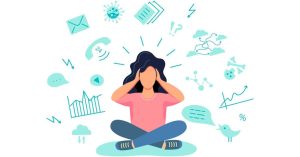Don’t Choose Pain: 10 Truths About your Backache (and how to get relief)

Fast facts about your spinal column
The spinal column, the long chain of bones that run from the base of your head to your lower back, is critical to human existence. This column is made of small chunks of bones called the vertebrae. Not all living organisms possess a spinal column. Human beings are one of the 50,000 species who can be called as vertebrates (having a spinal column).
How does the spinal column benefit us?
- Supports our body weight
- Makes bodily movements possible
- Protects the spinal cord.
What is the spinal cord?
The spinal cord is the main path of communication between the brain and the rest of your body. Any injury to this could severely hamper significant bodily processes such as movement and thinking.
What are some other fascinating facts about the spine?
- There are 33 vertebrae in the human spinal cord.
- The entire spine is divided into 3 zones – cervical, thoracic, & lumbar.
- Cervical has 7, thoracic has 12, and lumbar has 5 vertebrae respectively.
- 220 ligaments, 120 muscles, and 100 joints – this is what your spinal column is made of.
- 1/4th of your spine is made of non-bone, soft matter called cartilage.
Back pain is a relatively common complaint among all. In fact, that 1 out of every 10 individuals on this planet suffers from a backache, at any given point in time. And as high as 80% of all the people around the globe will experience a backache at least once.
Back pain: The global burden
If you take a look at the list of factors that produce most disability (restriction of a human being’s physical or mental capacity to perform a task), backache is the most significant factor than any other. And this list includes the biggies such as heart attack, cancers, depression, and injuries. Along the same lines, lower backache is the 6th leading reason for DALY or disability-adjusted life years.
Facts and figures :
A whopping 37% of all occupational hazards is nothing but an aching back. In fact, among all the bodily aches we experience, back pain was in the number one position. Not to mention 1 out of every 4 adults experiences back pain once every 3 months. It is the second most leading cause of doctor visits and costs the world a staggering $ 100 billion annually!
What are the reasons for Back pain?
Back pain can be categorized into two types – acute and chronic. Acute back pain is where the pain lasts for less than 6 weeks whereas chronic is where the pain persists for longer than 6 weeks. The most common health conditions which give rise to back pain are spinal disc injuries, arthritis, osteoporosis, and structural abnormalities in the spine. There could be other non-medical reasons at play as well – sudden and abrupt movements, physical jerks, lifting heavy weight, and accidents (falls or road injuries).
A whiplash injury doctor would also consider other potential causes of back pain related to whiplash injuries, which occur due to sudden acceleration-deceleration forces typically experienced in car accidents or during high-impact sports. Whiplash can cause strain or sprain to the ligaments and muscles in the neck and back, leading to acute or chronic pain.
Aside from the ones mentioned, poor posture, obesity, a sedentary lifestyle, and stress also contribute to back pain. They put a strain on the muscles and supporting structures of the spine. Activities or medical conditions that weaken the core muscles or cause imbalances in muscle strength can also affect spinal alignment and stability, increasing the risk of back pain.
Disc and nerve issues
Remember that 25% of your entire spine is nothing but soft cartilage. These cartilage structures absorb any shock or jerk our body endures and also facilitate movement. Also known as spinal discs, this cartilage when damaged can also be a reason for significant back pain. These could become damaged either due to injury or even old age. When these spinal discs expand (herniated disc) they can prod or “pinch” the neighboring nerves causing extreme lower backache.
Mental stress and back pain
Studies indicate that stress and anxiety create a neurochemical change that puts our body in a state of distress and increases tension in the body. This and the fact that higher anxiety levels lead to higher muscular tension prove that there is a stark evident link between mental state and back pain. Not to mention, stress makes you more sensitive to bodily pain.
The right and wrong posture
How you sit, stand, walk, or even sleep can largely determine whether or not you will develop back pain. Too much bending or slouching, sitting or standing in incorrect positions, and not having proper back support – all of these factors related to posture can impact back pain. If one is not maintaining proper posture, he/she is more likely to experience wear and tear in the back muscles and back pain in the long term.
Back pain and tobacco use
Tobacco use is linked to poor blood supply which can cause rupture of blood vessels in the spinal disc. The hazardous chemicals present in tobacco are responsible for critical damage to the spine health such as loss of bone density, inflammation within the spinal joints, and poor supply of nutrients to the spinal column. Statistics reveal that a majority of smokers experience persistent back pain in the long run.
Pregnancy-related back pain
Pregnancy predisposes a woman to a number of bodily changes, many of which can contribute to an aching back. Firstly, the amount of weight gained as the fetus grows impacts the lower spine the most. Secondly, during pregnancy, a woman’s range of motion becomes highly restricted. And thirdly, due to the production of the pregnancy hormone “relaxin” the spine joints become loose. Due to these three critical factors, a pregnant woman faces a higher risk of back pain. Not to mention the tremendous amount of stress a pregnant woman experiences.
Congenital defects and other health conditions
Conditions such as spina bifida, scoliosis, and other neural tube defects are few of the birth defects which lead to chronic back. Additionally, other bodily conditions such as arthritis, spondylitis, kidney stones, pelvic infections and pain, obesity, and lupus are also associated with back pain. Even chronic digestive issues such as IBD or Inflammatory Bowel Disease are also linked to increased frequency of backaches.
How can you get instant relief from Back Pain?
- Don’t underestimate the power of a good night’s sleep. People who remain sleep deprived face more backache issues.
- Exercising regularly is equally important. One should remain agile by walking, swimming, or indulging in aerobics.
- Work on eliminating psychological stress from your life.
- If you have a bad case of a backache, don’t resort to too much bed rest. It can worsen the pain.
- Practice good posture – be it sitting, standing, walking, or sleeping.
- Work on improving your body’s flexibility and core strength.
- Get rid of harmful habits such as smoking and drinking.
- If you have a sitting job, make sure that every 45 minutes you get up and stretch.
- Don’t ignore your back pain. If you have recurring/ frequent backaches refer to a physiotherapist or chiropractor.
- Being happy and free from stress can work wonders for your back. The feel-good hormones or endorphins protect your body from a number of pains and inflammations.
Early detection of back pain is crucial to prevent its progression, improve outcomes, minimize disability, avoid complications, tailor treatment, and promote cost-effectiveness. Detecting and addressing back pain early allows for prompt intervention, better management, and a higher quality of life.







